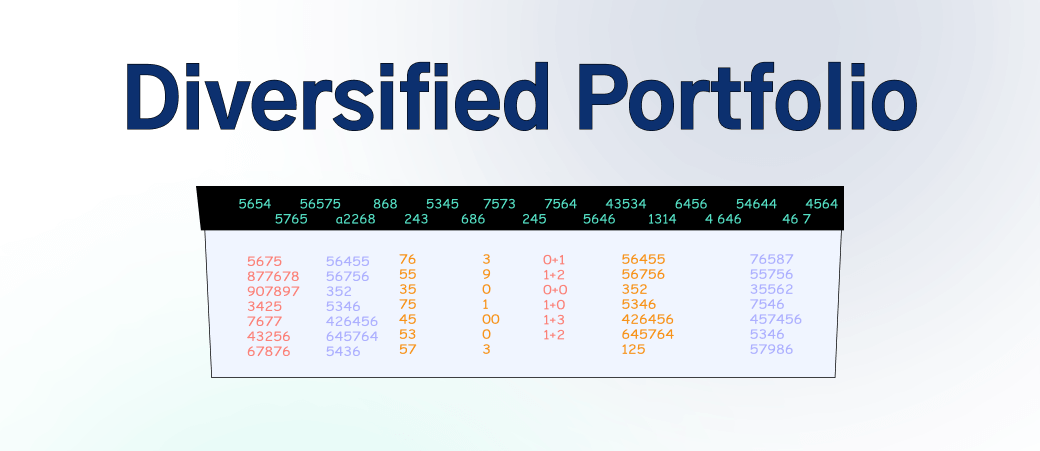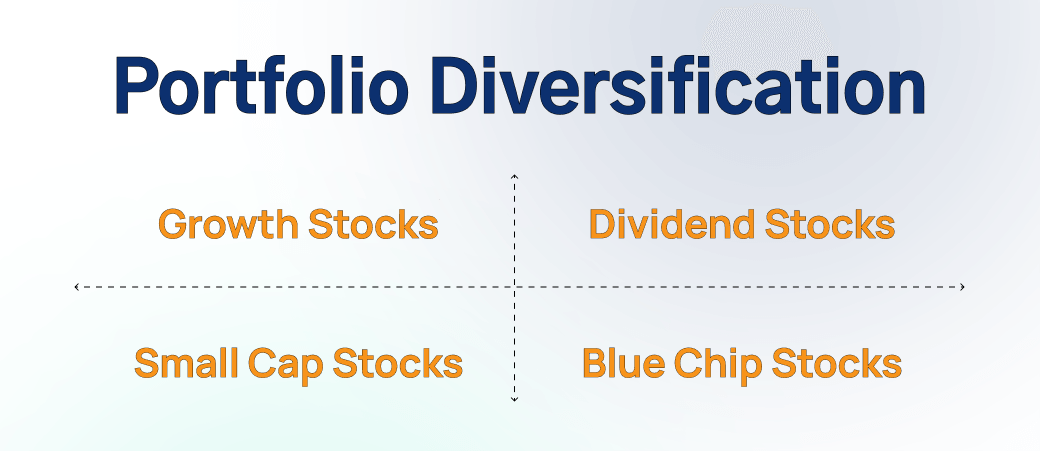Introduction

You may have heard the term “portfolio diversification” floated about if you are new to online trading. But what is a diversified portfolio, and why is this so important in the investment and trading industry?
“Don’t put all your eggs in one basket” is an aphorism that even applies to trading. The idea behind diversification is to keep various financial assets and securities. That way, if one decreases in price, it won’t pull your “basket” of potential savings down with it! In this TradeOr guide, we will teach you all you need to know about diversifying your portfolio.
What is portfolio diversification?
Diversification is a technique traders and investors use to spread risk across multiple (and varied) securities. The result is not only marginalized risk but also heightened return. In essence, you are keeping your trading fingers in many pies! Portfolio diversification is beneficial regardless of your investment strategy or style: day traders, scalpers, and “buy and hold” investors all swear by this age-old adage.
The best way to understand the reason for asset variety is to consider the opposite. Imagine you choose not to diversify your portfolio, but instead, go “all in” for an asset you are convinced is a sure winner. You invest everything in one stock. Should your prediction be correct, you could be retiring early! The markets are full of surprises, however. Even the most concise technical analysis can be off in its prediction.
Certain mathematical indicators can plot a likely direction of the price of said stock. If the economic context stays exactly the same, then the maths add up, your trade pays off, and you will be even more convinced that there is no need to diversify your assets. What about next time? The bigger and very real risk is that the stock will not perform precisely as you predicted. Should there even be a slight dip in price, all your deposits will take a hit.
Why diversify your portfolio
The alternative is to buy multiple assets across a variety of assets. You may want to purchase several stocks, some mutual funds, alongside investing in several cryptocurrencies you believe have potential. Therefore should a single one of these many and varied securities tumble through the markets, they will not take your whole portfolio with them. Moreover, if any one of the spikes in value and increases your investment (perhaps you will strike “crypto gold”), your whole portfolio will benefit accordingly.
There is no harm in diversifying your portfolio – there are only wins. The only way that an unvaried portfolio would hold neither risk nor reward for you would be if you had the world’s first working crystal ball! Not even Warren Buffett can predict the future with 100% accuracy, and he would be the first to recommend that you diversify your portfolio.
How to diversify your portfolio

“Portfolio diversification” may be a fundamental pillar of investment strategies. However, under the umbrella of this basic definition, many options are available to you. The exact way you choose to diversify your assets will depend on your portfolio itself. Stocks are commonly viewed as more “high risk, high return” than other securities such as bonds. A sensible middle ground would be to invest in both.
Ideally, as stock options go, you want to purchase stocks from several industries (health care, energy, the tech sector). The highly volatile cryptocurrency market can add high rewards if you play your “coins” right. You can offset some of the risks of these more return-yielding assets by balancing your portfolio with bonds or bond-facing ETFs.
Asset allocation models to follow

A simple answer to “how to diversify your portfolio” is to spread your investments across various assets from different classes. A typical ratio used by investors is 60:40 stocks to bonds. You may also want to allocate your capital across these assets:
- Commodities – manufactured goods or raw materials such as gold and copper;
- ETFs (exchange-traded funds) – baskets of securities within a specific sector such as stock indices or commodities;
- Cash assets – these include treasury bills, certificates of deposits (CD), money market funds, and other highly liquid assets (can easily be converted into cash);
- Real-estate – this includes not only buildings and plots of lands but also agriculture (farm holdings, livestock, etc.) and natural resources such as mineral deposits;
- Stocks – shares in publicly listed companies;
- Bonds – fixed income instruments that indebt the holder. Between individuals or the government.
Ideas for portfolio diversification
The foundation of any investment strategy or trading approach is a plan. Create a trading strategy that weighs up your finances, time available to trade, level of comfort with risk, and the markets in which you are interested. Once you know when, where, and how much you wish to trade, you can create a well-executed trading plan. Use social trading to research the strategies tried and tested by other traders. Joining a trading platform as TradeOr connects you to a broader community of traders from whom you can solicit advice and share tips.
Build a portfolio others will want to copy
Whether you go for a passive “buy-and-hold” approach, or you assume a more active trading strategy, a diversified portfolio will stand you in good stead. Active traders may also benefit from using derivatives such as CFDs (“contracts for difference”). CFDs are known as “leveraged” trading, enabling you to take more prominent positions thanks to borrowed collateral from your broker. Risk mitigation techniques like stop-loss and limit orders will also bolster a diversified portfolio.
In addition, traders should remember to:
Research: Take the time to research the assets you are adding to your portfolio thoroughly. Background searches on company profiles, alongside the economic data forming the context of your trades, will help carve your way to success. Educating yourself on trading strategies, technical analysis tools, indicators, and risk mitigation techniques will also help your final portfolio.
Plan: Add portfolio diversification to the management section of your trading plan. It is a fundamental cornerstone of many traders’ game plan.
Practice: Once you are happy with your plan (include trading goals, time commitments, available capital, and strategies to deploy), practice. You may run a simulation of your process or talk through techniques with fellow traders.
Minimize risk with TradeOr
Here at TradeOr, we have your best interests at heart. Our sincere advice for portfolio diversification is to invest your capital across a multifaceted selection of assets (stocks, bonds, ETFs.) Spread your trades over several markets. Not only will it minimize your risk and maximize return, but you may find forex appeals overstocks or vice versa, and better understand what ratio to apply to your portfolio.
Of course, variety is not everything. You also need to consider quality as well as quantity. Research the assets you wish to invest in. Assess the short-term profit and the long-term viability of the stock, token, or asset before putting your money in the markets. Having a trusty broker by your side will allow you the necessary tools to make informed decisions.
TradeOr is an innovative platform that offers leveraged trading (up to 500:1) across multiple markets. Use cryptocurrencies to trade in major stocks, indices, commodities, and more. Join TradeOr, and you unlock access to powerful charting software; all TradeOr clients automatically get premium access to TradingView. This program not only provides interactive and customizable price charts for technical analysis but connects you to a global forum of 30 million traders and investors.
The bottom line is that regardless of your trading strategy or investment choice, choosing your assets wisely – and with variety – will strengthen your position. Remember that portfolio diversification is a key way to minimize risk while maximizing reward.
FAQ
- What is the best way to diversify your portfolio?
You can choose to diversify your portfolio within the asset you are investing in (for example, stocks from various sectors – tech, health care, finance, etc.). A more common way to achieve even greater diversification would be to spread your capital across multiple asset classes. A common ratio is 60/40 (i.e., 60% of your portfolio would be stocks, while the rest is other assets, perhaps fixed-income assets like bonds).
- Is it bad to have a diversified portfolio?
On the contrary, portfolio diversification can both mitigate you against excess risk (you are not "putting all your eggs into one basket") and expose you to a greater range of potential reward.
- How many stocks does it take to diversify a portfolio?
There is no fixed number of stocks from which point a portfolio would be defined as "diversified." Some traders have set 30 stocks as a benchmark figure to aim for. What is equally important is that the stocks in question are spread across a range of industries and sectors."